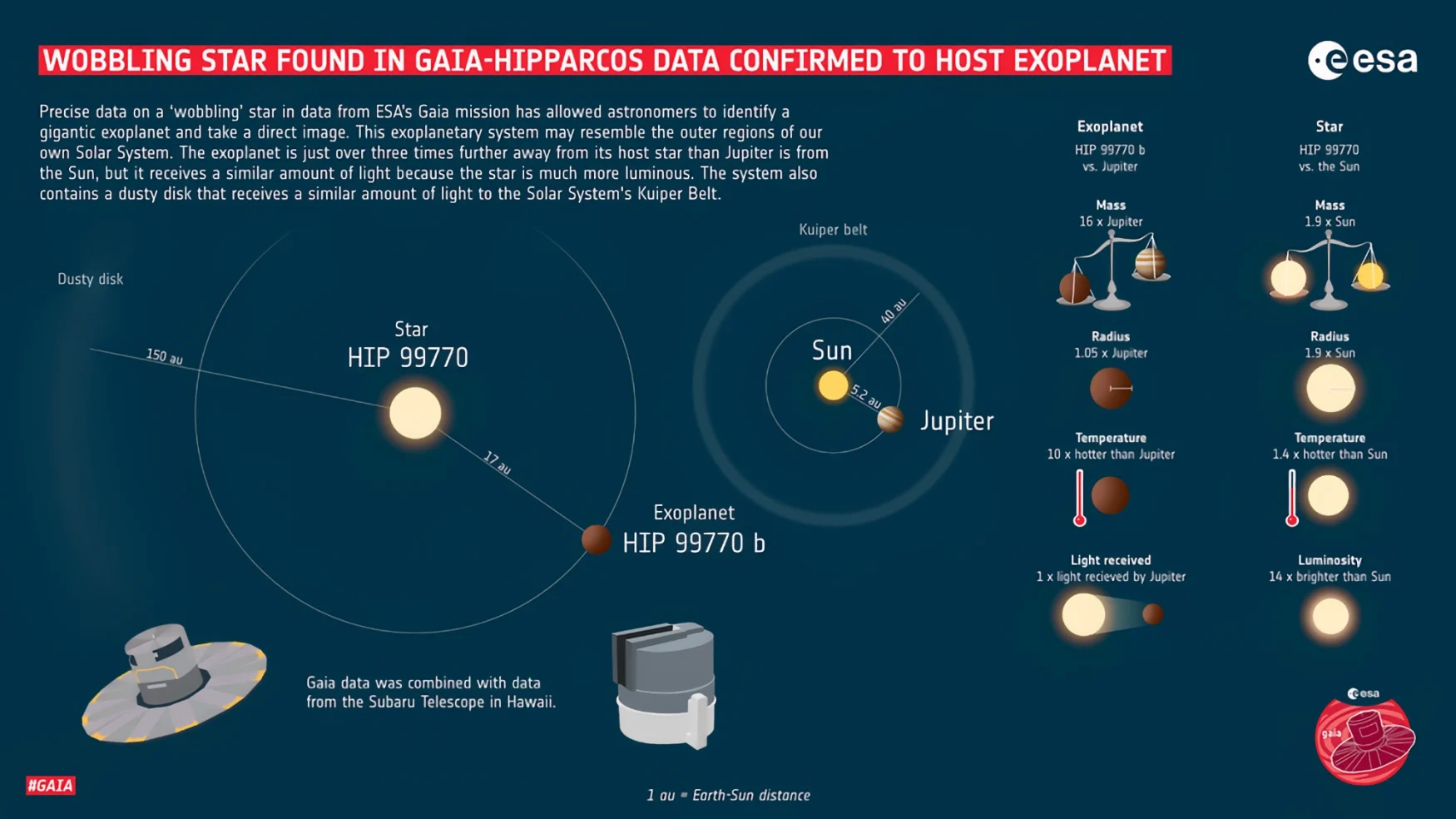Astronomers view their combination of direct and indirect imaging as a breakthrough for future planetary discoveries.
Astronomers have discovered a new exoplanet — but this time, the way they found it may be as significant as the discovery itself. Researchers used a breakthrough combination of indirect and direct planetary detection to locate the distant world known as HIP 99770 b. It could inch us closer to finding Earth-like exoplanets among our (distantly) neighboring stars.
Direct imaging is what most casual observers would expect to lie at the heart of exoplanet hunting: using powerful telescopes with advanced optics to capture images of distant planetary bodies. However, direct imaging is most effective for planets orbiting far from their stars; an exoplanet closer to its sun is usually obscured by the star’s bright light, making it difficult to detect or image. (When they’re farther away, there’s greater contrast between the exoplanet’s and the star’s light.)
Meanwhile, indirect imaging (precision astrometry) looks for stars that appear to “wobble,” meaning their gravity may be affected by an (otherwise unseen to us) exoplanet. This method can more easily detect the presence of planets orbiting closer to their stars — like the Earth’s relationship to the Sun. As a result, indirect imaging has yielded over 5,000 exoplanet discoveries, while direct imaging has only captured about 20.
The international team of researchers, led by Thayne Currie of the National Astronomical Observatory of Japan (NAOJ) and the University of Texas at San Antonio, combined the two methods to discover the new exoplanet. First, they used data from the Hipparcos-Gaia Catalogue of Accelerations — a map tracking the precise positions and motions of nearly two million stars in the Milky Way — to identify the star HIP 99770 as a prime candidate for hosting an exoplanet. Then, they used Japan’s ultra-powerful Subaru telescope (in Mauna Kea, Hawaii) to directly image the newly discovered exoplanet, creatively titled HIP 99770 b.

European Space Agency
The European Space Agency image above illustrates that the exoplanet is about 16 times as massive as Jupiter. Despite having an orbit over three times longer than Jupiter’s orbit around our Sun, HIP 99770 b receives around the same amount of light as Jupiter because its sun is about twice as massive as ours. The researchers say it may have water and carbon monoxide in its atmosphere.
Astronomers believe the new method combining direct and indirect imaging opens an exciting new door for future discoveries. “It provides a new path forward to discovering more exoplanets, and characterizing them in a far more holistic way than we could do before,” says Currie. Additionally, the group views Gaia’s upcoming fourth data release, which will yield nearly double the previous version’s data, will make it easier to identify stars wobbling from the gravity of planetary bodies. “The discovery of this planet will spawn dozens of follow-on studies.” The team is now studying data from about 50 other stars showing promise for hosting exoplanets.
“This is sort of a test run for the kind of strategy we need to be able to image an earth,” said Currie. “It demonstrates that an indirect method sensitive to a planet’s gravitational pull can tell you where to look and exactly when to look for direct imaging. So I think that’s really exciting.”